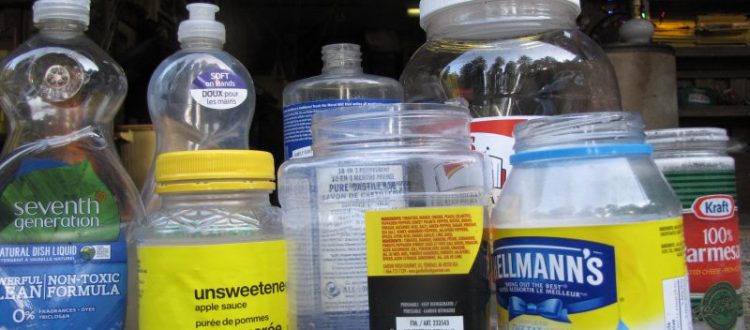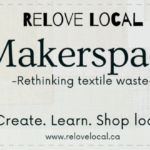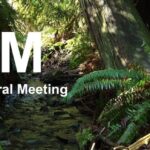Recycling plastics
More than 300 million tons of plastics is produced globally each year, with only about ten percent of that being recycled. And statistics are showing that the production of plastics continues to rise.
The main goals of recycling plastics is to:
- Keep the material out of the landfill and even more harmful, our oceans.
- Put less pressure on the use of virgin materials to manufacture more plastic.
- Create a “closed loop” where 88 percent less energy is required to manufacture the same product from recycled material.
The process involved to recycle plastics is complex due to two main issues:
- The various types of plastic polymers being manufactured and the technology required to separate, sort, clean and melt them down into a raw material.
- Where you reside, which will determine what materials are acceptable for collection by your local district and recycling depot. The costs for recycling compared with other forms of waste disposal varies regionally and between urban and rural areas. Recycling depots on Gulf Islands will have added costs to move materials.
Recycling plastics has now become an ingrained habit for most Islanders. You rinse out your plastics and either put them curbside for RDN (Regional District of Nanaimo) collection, or you bring them to GIRO in your blue box and sort them into the various bins.
Some of the frequently asked questions regarding plastics are:
- Is this plastic recyclable?
- Where do plastics go after they leave GIRO?
- What do all the numbers mean in the chasing arrow symbol?
There are five common types of plastics. They are categorized by a name and a number which will be in the chasing arrow symbol on the bottom of each container:
- ♳ PETE (Polyethylene terephthalate) number 1, example: soft drink bottles, dish soap bottles, mayonnaise jars.
- ♴ HDPE (High density polyethylene) number 2, example: milk jugs, laundry detergent containers, shampoo bottles.
- ♶ LDPE (Low density polyethylene) number 4, example: plastic shopping bags, garbage bags.
- ♵ PVC (Polyvinyl chloride) number 3, example: squeeze bottles.
- ♷ PP (polypropylene) number 5, example: single serving yoghurt containers, take-out containers, take-out lids, plastic cutlery.
The ability for these plastics to be recycled depends on various factors:
- The quality or grade of the plastic as a raw material.
- The demand for the raw material to use in further manufacturing of various products.
- The contamination level of the material.
- The access to a processing plant that has the technology to recycle that material.
PETE and HDPE are in a “closed-loop” recycling process, where the recycled product has the same properties as the original. For example, recycling PETE back into water bottles, and HDPE back into milk jugs.
PETE and HDPE are considered a higher grade of plastic as a raw material and therefore have a more constant market value.
LDPE, PVC and PP are a lower grade and there is less demand for the raw material as there is generally a glut in the market.
Some plastics are down-cycled, where recovered plastic is used in a “non-plastic” way. For example; plastic lumber, textiles and clothing.
Once you have dropped off PETE, HDPE and LDPE plastics at GIRO they are compacted into 300lb bales and taken in the GIRO truck to Cascade Recovery at Duke Point where they are re-baled and transported to Merlin Plastics in Vancouver.
Merlin Plastics has some of the most advanced technologies in place to sort the plastics before cleaning, shredding and pelletizing the material back into its raw state.
If the lower grade plastics are too contaminated to be recycled or when there is a glut of that material in the market, then Merlin will transport those plastics to Lafarge in Vancouver where they are incinerated as “Waste to Energy”.
For the last thirty years seventy percent of the world’s plastics were exported to China. However, in January this year China enforced a ban (National Sword), on the import of mixed plastics and soft film. Consequently, there is a huge volume of these materials stockpiled globally as recycling processors scramble to find alternative markets. The prices below in MT(metric tonnes), show that we are currently paying to have LDPE and Mixed Plastics processed.
- LDPE (plastic shopping bags), current market value in MT $135
- HDPE (milk jugs colour), current market value in MT $150
- HDPE (milk jugs clear), current market value in MT $300
- PETE (water bottles, dish soap bottles) current market value in MT $0
- Mixed Plastics (clamshells, single-use containers), current market value in MT $185
What can you do as the consumer?
Rethink, Reduce, Reuse and Recycle
The four R’s can have a huge impact on the planet depending on where you place the most importance:
Recycling is the fourth R and it is still questionable as to whether or not it is a sustainable long-term option for the planet. Recycling is the end of the line. The plastic product has already been manufactured and you have made the decision to purchase it. You are now left with the product and the packaging and the choice of how best to dispose of it. Yes, recycling requires less energy than manufacturing a product from virgin materials but it still requires energy and natural resources to collect, sort, transport and process it.
Reuse is the third R and is an effective option to prolong the life of a product. When considering a purchase explore whether that item can be purchased second-hand at local thrift stores, GIRO, community bulletin boards or Craig’s list. You will be avoiding more packaging and be extending the life of that material.
Reduce and Rethink are the most important R’s and can create real change at a local and global level. We are bombarded with choices every time we go shopping; which product to buy, price, quality, where was it made, is it organic? Or will it make my life better and will I feel happier?
Perhaps the most important question you should ask yourself when making a purchase is “Do I really need it?”
Corporations are very effective at convincing us that we need the latest and newest version of everything to be happy. “Planned obsolescence”, the manufacture of goods that quickly become obsolete and therefore require replacing, has become the accepted norm in our society. And while our desire for stuff continues to increase, the world’s non-renewable resources continue to disappear. In the past three decades alone, we have used up one third of the earth’s resources.
Rethinking and Reducing our consumption collectively is how we can bring about real change for the planet. Instead of buying more stuff, look to declutter and simplify your life. People tend to be happier when they feel gratitude for everything they have rather than focusing on what they don’t have. Spend more time with family and friends and engaging in activities that bring you joy and give your life purpose. It has been proven that it is experiences that make us happier, not possessions.






